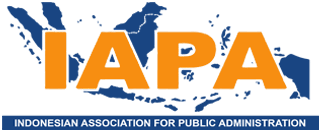MANAJEMEN PEMBELAJARAN AKTIF BERBASIS KARAKTER
DOI:
https://doi.org/10.30997/jsh.v9i2.1311Keywords:
active learning, character education, management.Abstract
This research is to get factual data about the planning, implementation, supervision, and some problems of character-based active learning management at independent curriculum 2013 junior high schools in Depok. This research uses descriptive method. The result showed that character-based active learning management consists of learning planning, implementation, and supervisions which derived from unique school values.References
Benninga et.al Character and Academics: What Good Schools Do, Phi Delta Kappan, Volume: 87 issue: 6, page(s): 448-452 February 1, 2006
Bonwell, C.C., and J. A. Eison, 1991, “Active Learning: Creating Excitement in the Classroom.
David Silverman, Interpreting Qualitative Data; Methods for Analysing Talk, Text and Interaction, (London: Sage Publication, Ltd, 1994), h. 9.
Fasli Jalal, 2016, Makalah Seminar Nasional, Jakarta.
Hackathorn, J., Solomon, E. D., Tennial, R. E., Garczynski, A. M., Blankmeyer, K.,Gebhardt, K. & Anthony,
Larry P Nuccy dan Darcia Narvaez, Handbook of Moral and Character Education; Moral Education and the Cognitive Development Tradition; Lawrence Kohlberg’s Revolutionary Ideas by John Snareyand and Peter Samuelson (Routledge Taylor and Francis, 2008), h.55
Michael Prince. “Does Active Learning Work? A Review of the Reseach”, Journal of Engineering Education, 2004, 93 (3), 223-231
Marvin W Berkowitz, What Works on Character Education, Journal of Research in Character Education, Volume 5 (1), 2007, pp 29-48)
Panduan Pelaksanaan Pendidikan Karakter, Kemendiknas, 2011. Permendikbud Nomor 103 Pasal 2 Tahun 2014
Pedoman Sekolah 2009 terkait Pengembangan dan Pendidikan Budaya dan Karakter Bangsa
Peraturan Menteri Pendidikan Nasional Nomor 65 Tahun 2013 tentang Standar Proses untuk Satuan Pendidikan Dasar dan Menengah hal 8-11
Pusat Kurikulum. Pengembangan dan Pendidikan Budaya dan Karakter Bangsa: Pedoman Sekolah. 2009:9-10.
Rasul Djuharis, “Pelaksanaan Pendidikan Karakter, Ekonomi Kreatif, Dan Kewirausahaan Dalam Belajar Aktif di SMK”, Jurnal Pendidikan & Kebudayaan Vol. 19, No. 1 Maret 2013.
Richard L. Daft, New Era of Management (Canada, Printed, 2010), h.7 45
Robbins Mary Coulter, Management (London: Pearson Education Limited, 2012), h.232
Serva, M. A., & Fuller, M. A. “Aligning what we do and what we measure in business schools: Incorporating active learning and effective media use in the assessment of instruction”. Journal of Management Education, 28, 2010 hh. 19–3
Stephen P. Robbins, Management Tenth Edition (Prentice Hall, Pearson, 2009), h. 415
Stewart-Wingfield, S., & Black, G. S. (2005). “Active versus passive course designs: The impact on student outcomes”. Journal of Education for Business81, 2005, hh. 119–125.
Yoder, J.D., dan Hochevar, C.M. Encouraging Active Learning Can Improve Students’Performance on Examinations. Teaching of Psychology, 2005, 32 (2), 91-95.
Zayapragassaraszan and Santosh Kumar. Active Learning Methods. NTTC Bulletin (ISSN 2250-396X) 2012; 19(1):3-5.
Bonwell, C.C., and J. A. Eison, 1991, “Active Learning: Creating Excitement in the Classroom.
David Silverman, Interpreting Qualitative Data; Methods for Analysing Talk, Text and Interaction, (London: Sage Publication, Ltd, 1994), h. 9.
Fasli Jalal, 2016, Makalah Seminar Nasional, Jakarta.
Hackathorn, J., Solomon, E. D., Tennial, R. E., Garczynski, A. M., Blankmeyer, K.,Gebhardt, K. & Anthony,
Larry P Nuccy dan Darcia Narvaez, Handbook of Moral and Character Education; Moral Education and the Cognitive Development Tradition; Lawrence Kohlberg’s Revolutionary Ideas by John Snareyand and Peter Samuelson (Routledge Taylor and Francis, 2008), h.55
Michael Prince. “Does Active Learning Work? A Review of the Reseach”, Journal of Engineering Education, 2004, 93 (3), 223-231
Marvin W Berkowitz, What Works on Character Education, Journal of Research in Character Education, Volume 5 (1), 2007, pp 29-48)
Panduan Pelaksanaan Pendidikan Karakter, Kemendiknas, 2011. Permendikbud Nomor 103 Pasal 2 Tahun 2014
Pedoman Sekolah 2009 terkait Pengembangan dan Pendidikan Budaya dan Karakter Bangsa
Peraturan Menteri Pendidikan Nasional Nomor 65 Tahun 2013 tentang Standar Proses untuk Satuan Pendidikan Dasar dan Menengah hal 8-11
Pusat Kurikulum. Pengembangan dan Pendidikan Budaya dan Karakter Bangsa: Pedoman Sekolah. 2009:9-10.
Rasul Djuharis, “Pelaksanaan Pendidikan Karakter, Ekonomi Kreatif, Dan Kewirausahaan Dalam Belajar Aktif di SMK”, Jurnal Pendidikan & Kebudayaan Vol. 19, No. 1 Maret 2013.
Richard L. Daft, New Era of Management (Canada, Printed, 2010), h.7 45
Robbins Mary Coulter, Management (London: Pearson Education Limited, 2012), h.232
Serva, M. A., & Fuller, M. A. “Aligning what we do and what we measure in business schools: Incorporating active learning and effective media use in the assessment of instruction”. Journal of Management Education, 28, 2010 hh. 19–3
Stephen P. Robbins, Management Tenth Edition (Prentice Hall, Pearson, 2009), h. 415
Stewart-Wingfield, S., & Black, G. S. (2005). “Active versus passive course designs: The impact on student outcomes”. Journal of Education for Business81, 2005, hh. 119–125.
Yoder, J.D., dan Hochevar, C.M. Encouraging Active Learning Can Improve Students’Performance on Examinations. Teaching of Psychology, 2005, 32 (2), 91-95.
Zayapragassaraszan and Santosh Kumar. Active Learning Methods. NTTC Bulletin (ISSN 2250-396X) 2012; 19(1):3-5.
Downloads
Published
2018-10-17
How to Cite
Febriantina, S. (2018). MANAJEMEN PEMBELAJARAN AKTIF BERBASIS KARAKTER. Jurnal Sosial Humaniora, 9(2), 127–137. https://doi.org/10.30997/jsh.v9i2.1311
Issue
Section
Articles

















